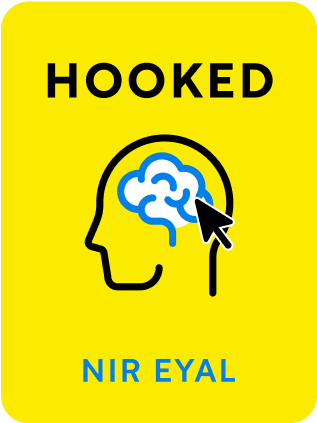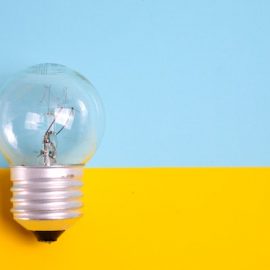

This article is an excerpt from the Shortform summary of "Hooked" by Nir Eyal and Ryan Hoover. Shortform has the world's best summaries of books you should be reading.
Like this article? Sign up for a free trial here .
What is the cycle of trigger, action, reward, investment? How do these 4 steps interact?
Trigger, action, reward, and investment are the four steps of the Hooked model. They flow into one another and repeat for a cycle of habits.
Read more about the cycle of trigger, action, reward, investment and how it works.
Trigger, Action, Reward, Investment
External triggers are delivered through the environment. They contain information on what the user should do next, like app notifications prompting users to return to see a photo.
Over time, as a product becomes associated with a thought, emotion, or preexisting routine, users return based on internal triggers. Emotions – especially negative ones like boredom, loneliness, confusion, lack of purpose, and indecisiveness – are powerful internal triggers. These triggers may be short and minor, possibly even subconscious.
To build a habit, you need to solve a user’s pain so that the user associates your product with relief.
To discover the root problem, ask “Why?” as many times as it takes to get to an emotion.
To initiate action in a habit, doing must be easier than thinking. An action has three requirements:
- Sufficient motivation
- Sufficient ability
- A trigger to activate the behavior
Make the process to use your product as simple as possible. Lay out the steps the customer takes to get the job done. Then remove steps until you reach the simplest possible process: trigger, action, reward, investment.
Identify which factor is most impeding your users. Is the mental effort needed to use your product too high? Is the user in a social context where the behavior is inappropriate? Is the behavior so different from normal routine that it’s offputting?
To build a habit, your product must actually solve the user’s problem so that the user depends on your product as a reliable solution. The benefit the user receives is the reward.
Variable rewards are more effective than fixed rewards. Fixed rewards don’t change at all, delivering the same reward at unchanging intervals. Variable rewards are more like slot machines, delivering unknown amounts at an unknown frequency. Unpredictable reward sizes and novelty spike dopamine levels, which in turn strengthen the development of the habit. Imagine a slot machine that merely paid you $0.99 every time you wagered $1.00 – how fun would that be?
The more effort we put into something, the more we value it, and the more likely we are to return. Thus, to encourage a user to return and build a habit, prompt them to put something of value into the system so that they value the app more highly and pave the way for longer-term rewards.
Often the user’s investment increases the value of future rewards, building a virtuous cycle of usage that becomes ever more valuable.

———End of Preview———
Like what you just read? Read the rest of the world's best summary of Nir Eyal and Ryan Hoover's "Hooked" at Shortform .
Here's what you'll find in our full Hooked summary :
- The 4 key steps that addictive tech products use to ensnare you
- Why user rewards need to be random and variable to have the strongest effect
- How to build irresistible apps yoruself






